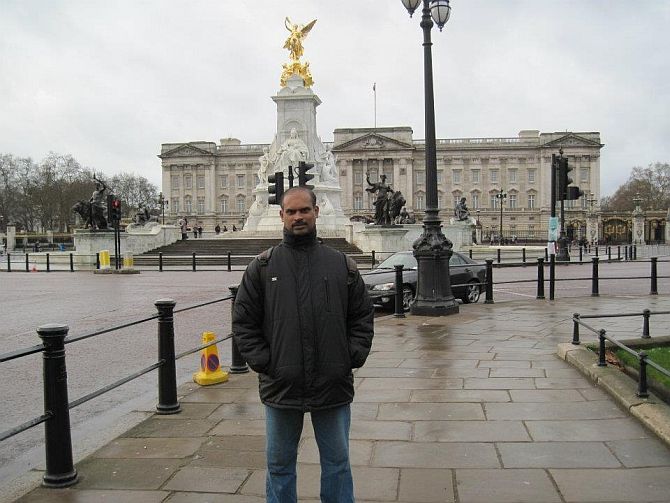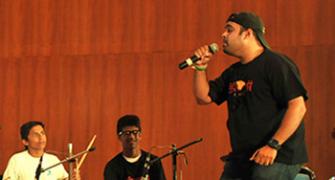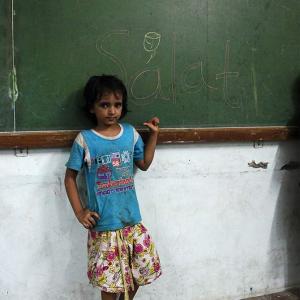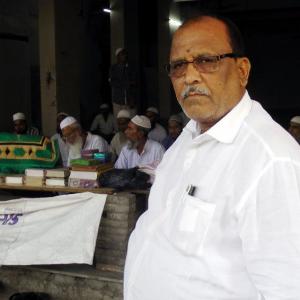Even as plans to redevelop Dharavi continue to gather dust in government files, its young residents have chalked their own course and chosen to fly high. Hepzi Anthony recounts a few inspiring tales.

Other slums may have laid claim to its tag of being Asia’s largest slum, but within Dharavi are stories of India shining despite its squalor, of grit, determination and fighting against odds to overcome barriers.
Transformation is in the air in Dharavi today, and it is not just physical.
Change is manifest not just in the form of the superficial replacement of slums with buildings or in terms of better quality roads, improved hygiene or even the ATMs coming up there; it is evident from the sharp rise in the socio-economic profile of the average Dharavi resident that has seen a massive upsurge.
Indeed, the story of Dharavi today is of not just buildings replacing the slums but the rise of a new generation that is clearly more educated, more informed and more affluent, too.
As a new generation comes up, the success stories from India are now being replaced by stories of its residents working, studying and even settling down in foreign shores.
From being a symbolic representation of the daily struggle for survival of the urban, migrant and Indian poor in Hollywood films, many people raised there now literally crisscross continents for work or study.
Some, like Jasmine Jacob, discovered that her humble origins and surroundings could not clip their wings of ambition.
Her fascination for the scientific world saw her do research in Nanotechnology and take off to countries like the United States and France.
After completing her post-graduation in chemistry from the Institute of Science, Mumbai, she was for a Department of Atomic Energy scholarship that enabled her for a doctoral study of nanosciences at the Bhabha Atomic Research Centre.
Her superior performance there further earned her a government-funded post-doctoral research study trip to Paris for 15 months.
From there on she moved on to do another course at the University of Notre Dame at Indiana, US. Incidentally, her entire higher study was done entirely with the help of scholarships.

“Money is not everything. I am a good example of how if you are prepared to work hard, and you have it in you, nothing can stop you,” says Jacob.
Her father, who worked in a private firm and was the sole bread earner in her family, could not afford to pay her fees for higher studies.
“But my teachers ensured that my studies were not affected. They knew of my background and went out of their way to help me. They supported me by finding out and recommending me for scholarships,” she says.
Currently, she is doing research in nanotechnology and continues to reside in Dharavi, though her family has now shifted to a building there.
“Till my third standard, we stayed in a tin house that would be roughly about 10x10 sq ft and then we moved into a brick house. There were lots of infrastructure issues at home and around. It was impossible to study at evenings as everyone would be watching television and there would be so many distractions around,” she recalls.
Having found her dream, Jacob now wants to inspire other students, especially from her locality, to dream big and pursue their dreams.
Not to convent schools where the rich children go, she prefers to go to her former alma mater Kamaraj Memorial School at 90-ft Road to deliver motivational talks to students. Jacob had studied here in Tamil medium till the fourth standard and thereafter shifted to English medium in the same school.
She tells her students to concentrate on their studies and not get scared of the roadblocks on the pathway to their dreams.
“I was so focused and good at my studies that I did not know many students in my class. But, my co-students knew me and wanted to befriend me for my notes. My locality did not matter to anyone,” she says.
Jacob says she never dreamt of working or staying abroad and did not fancy a high-paying job or the lifestyle there.
“I always wanted to be in India and am happy to be here,” she signs off.

Her view is shared by Amolik Selvaraj, who also crisscrossed the US and the United Kingdom before returning to Pune for work.
Brought up in Dharavi, 46-year-old Selvaraj started working as a data entry operator while graduating from the Dr Ambedkar College in central Mumbai’s Wadala locality.
Along with studies and work, he took to learning computer software languages like Clipper, Foxpro, VB.NET and C#.NET.
This helped him get offers to work as a systems programmer and got him a breakthrough in Maryland, US, in 2007 for about two years. Thereafter, he shifted to quality assurance that kept his career on a high and helped him move to other countries.
In 2011, he moved on to work in Didcot, Oxfordshire, in the UK for a little over a year.
Recently, he shifted to Pune where he works as a senior consultant at Systems Plus Technologies.
Despite staying abroad for many years and having visited places like Washington, London and Oxford, Selvaraj says that he is quite open to the idea of staying in Dharavi even now.
In fact, he continues to emotionally connect with the place and to date his passport and Aadhar card still bear his Dharavi address.
“One of the things about Dharavi is that one would end up running into so many people just like that. Abroad, people never turn up impromptu at your place. They would almost always turn up only after fixing an appointment. The doorbell never rings without one knowing who would be at the door.
“Also, I have lost my spiritual connect after I shifted out of Dharavi. There, I could just walk over to the open church nearby almost any time of the day,” says Selvaraj.
But he is practical enough to know that it would not be that easy for his family.
“Were it not it for factors like my children’s education and good influence, I would have happily shifted back to Dharavi. Things have changed so much now. ATMs are accessible there and the facilities are much better now,” he says.
Reverend Samuel Christudoss, ex- parish priest of Good Shepherd Church, Dharavi, who has resided in and has been observing the area for over a decade, notices: “It is almost routine to hear old people talking about their children being in the US or Germany these days. Apart from those settled abroad, many people travel abroad regularly for work or for study projects. The new generation has lapped up higher education like never before with the result that almost everyone is literate here now.”
The prosperity has percolated downwards too.
“Long back, when I had to live in Dharavi around 1991, I recall being provided with just mats to sleep with bricks for pillow by the church because the people there themselves lived with such basic, primitive means.
“I would be hauled up even if I took a cab for travelling (autorickshaws are not allowed in Dharavi) and questioned as to why I did not walk the distance. Today, when I am re-posted in this place, I see a marked difference here. The very same church now allows me the option of travelling by air-conditioned cabs, a direct result of the younger generation being exposed to a higher standard of living,” he observes.
So, while the much-touted Dharavi Redevelopment Plan continues to gather dust in the files or drawing boards of the Maharashtra government, the people of Dharavi have chalked their own course and risen to fly up high beyond the boundaries of the nation.










